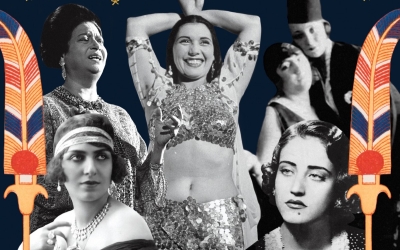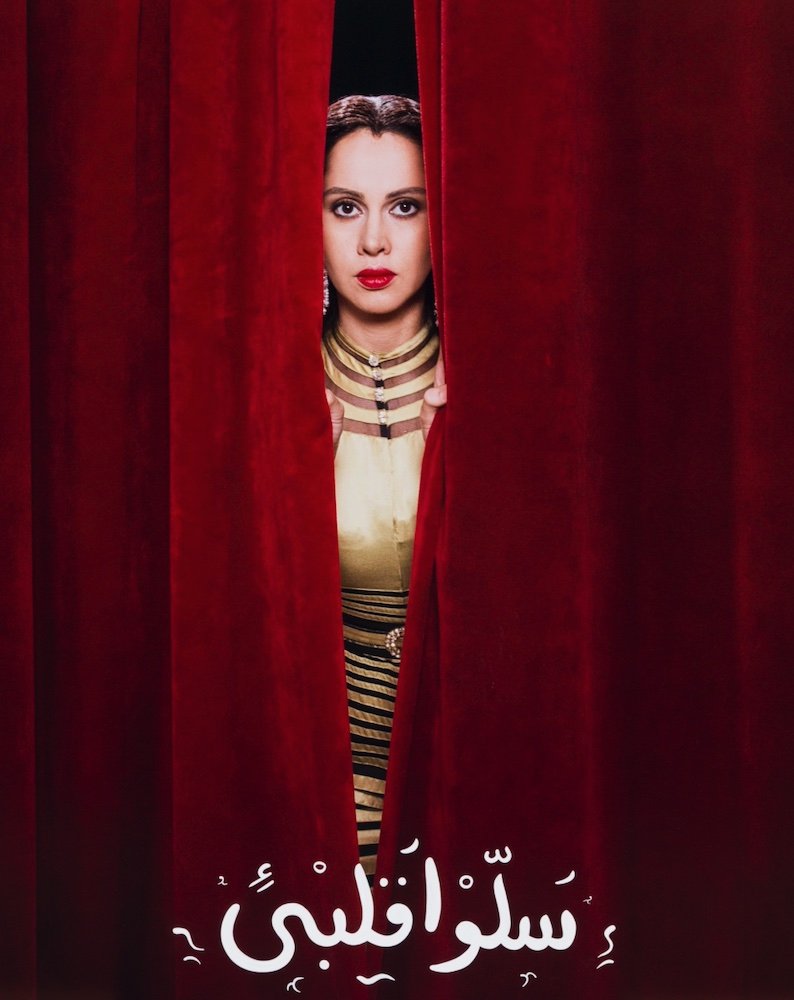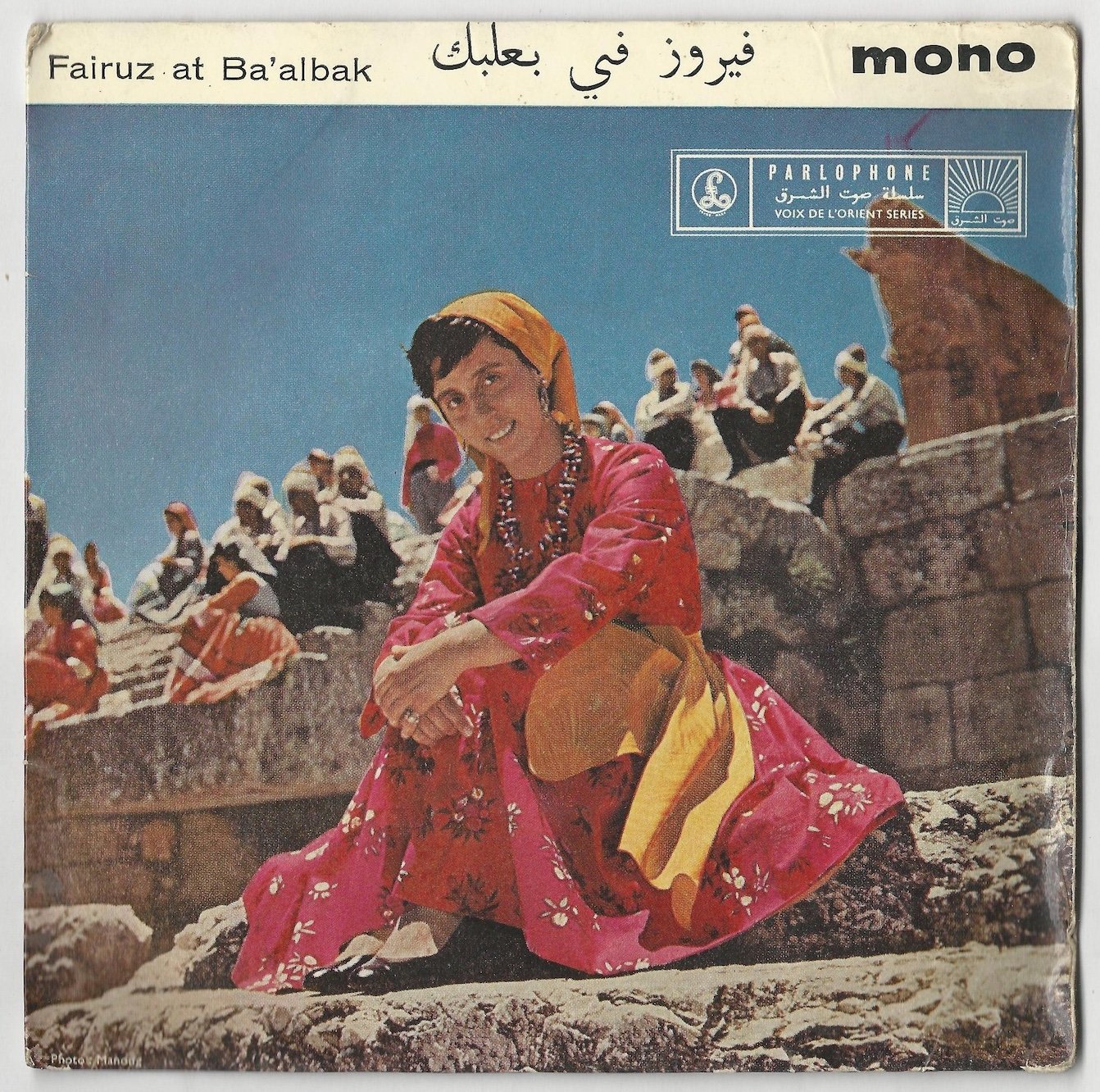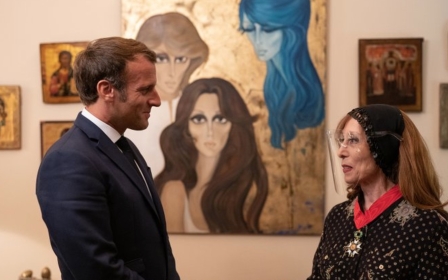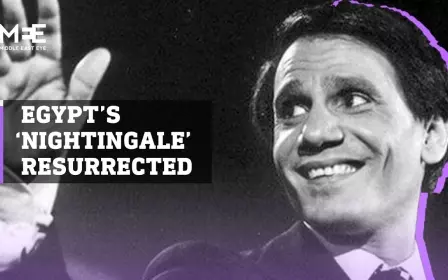Divas, from Umm Kulthum to Dalida: Exhibition honours golden age of Arab song
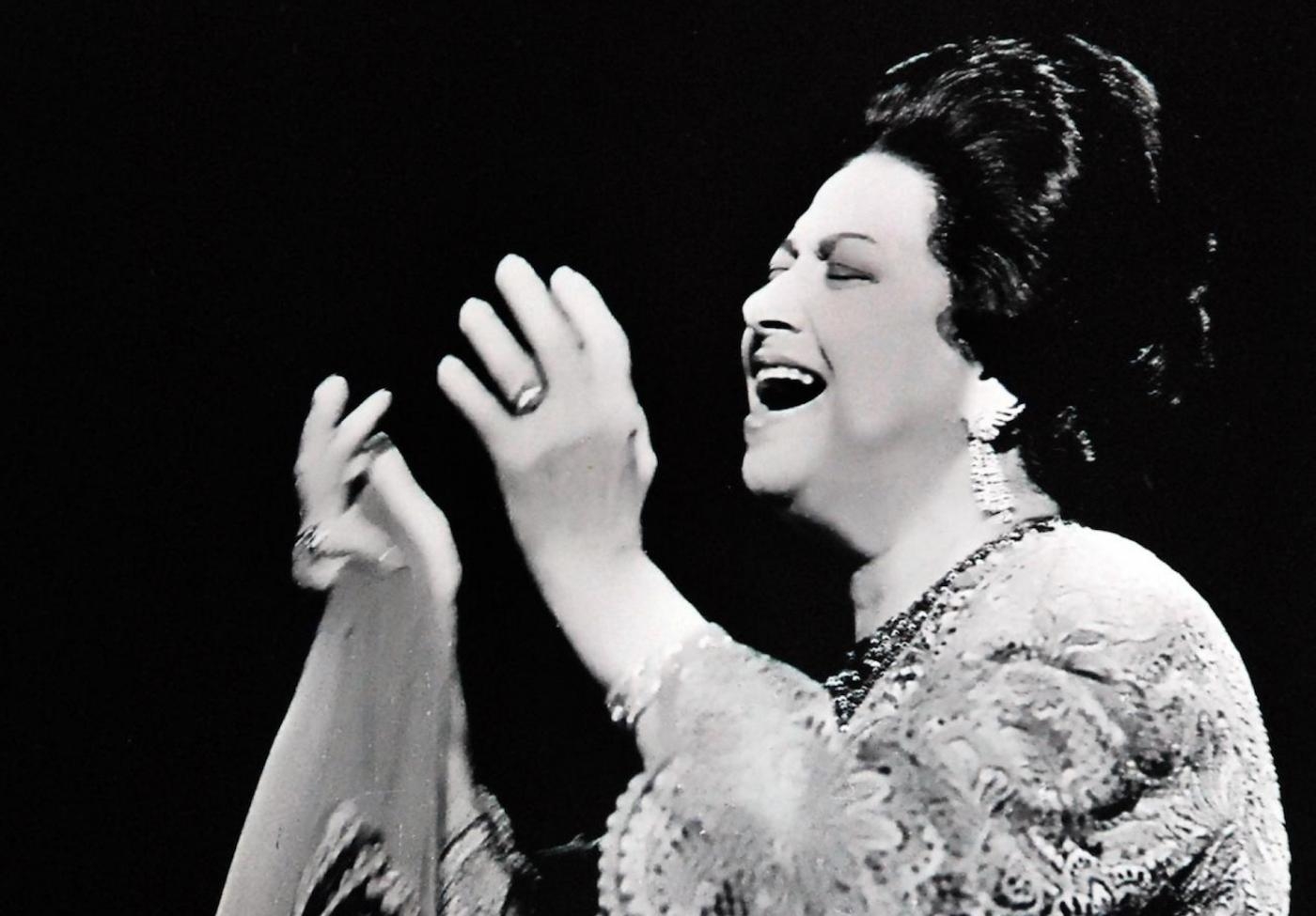
An exhibition in Paris is paying tribute to the female stars who helped define the Middle East's artistic and cultural scene for decades.
The Arab World Institute has turned part of its building into a performance hall, complete with an elevated stage, red velvet curtains, and the voices of iconic singers beaming through loudspeakers.
New MEE newsletter: Jerusalem Dispatch
Sign up to get the latest insights and analysis on Israel-Palestine, alongside Turkey Unpacked and other MEE newsletters
Titled Divas, from Umm Kulthum to Dalida the exhibition runs until September and showcases some of the Middle East’s most influential singers, actors, dancers, and producers whose combined efforts helped define Arab cinema and music in the 20th century.
The exhibition takes a closer look at the lives and careers of the stars, as well as their cultural and political impact on the Middle East, from the 1940s to the 1970s.
Female pioneers
The organisers aim to take visitors back to the golden age of cinema in the first half of the 20th century, when the arts flourished, setting the tone for cultural productions for decades to come.
The exhibition acknowledges the role of Arab feminist intellectuals in the 1920s and 30s in helping to open the doors for female entertainers and spark an artistic revolution.
Those figures include Hoda Shaarawi (1879-1947), who is credited with catalysing the Egyptian feminist movement of the 1920s when she publicly removed her veil at a Cairo train station.
Another is Ceza Nabarawi (1897-1985), who worked with Shaarawi editing the feminist magazine L’Egyptienne, one of the first militant womens' magazines in Egypt.
It was around the period the pair were involved in their activism that filmmaker Aziza Amir released one of the first Egyptian films ever made, Laila (1927). The movie sharply critiques the status of women in rural Egypt in the 1920s, telling the story of a young orphaned woman who is impregnated and later abandoned by her lover.
Elodie Bouffard, the co-curator of the exhibition said that the exhibition paid homage to the women who fought for political change.
“Women in the Arab world fought to live their life, fought to obtain more rights and it was a woman's fight - women for women,” she said.
“This exhibition is just to say ‘at this time, this industry was very strong and was an industry where women had their place',” she added.
Some of the other women featured include singer and actor Munira al-Mahdiya, and Badia Masabni, an entertainer and businesswoman born to a Lebanese father and a Syrian mother, whose nightclubs were popular among Cairo socialites.
Icons of Arab song
Featuring prominently are four of the greatest figures in Arab song: Fairuz, Umm Kulthum, Warda, and Asmahan.
Visitors can enter reconstructed dressing rooms with dimmed lights and red velvet drapes designed to mimic the atmosphere the artists experienced before entering the stage.
Items on display include replicas of Umm Kulthum’s performance gowns, Warda’s personal possessions, recordings of fan letters written lovingly to Fairuz.
Umm Kulthum recorded hundreds of songs in her career, which lasted over 60 years, with her music still being popular in the Arab World today.
The Egyptian artist’s songs were long, with a handful playing out over the course of hours. Her mix of poetry and distinctively Egyptian backing music enchanted those in the audience.
Fellow diva Asmahan was of Syrian and Lebanese origin but also grew up in Egypt. She went on to become one of the Arab world’s most notable vocalists before dying abruptly in a car accident.
The exhibition allows the curious visitor not just a look into the lives of the performers but also their political activism.
Warda, who was born in France to an Algerian father and Lebanese mother, was a fervent supporter of Algerian independence. Her song Ya Habibi ya Mujahid (oh friend, oh fighter) was an ode to the Algerian resistance and Kulluna Djamila (we are all Djamila) was in memory of Djamila Bouhired, the Algerian militant nationalist who was imprisoned by French colonialist forces.
Besides her activism, Warda distinguished herself with her ability to sing in classical Arabic, as well as in dialects.
The only of these divas still alive is the Lebanese singer Fairuz, perhaps one of the most famous faces in contemporary Arab music.
Songs like Sa’aloony El Nas (People Asked Me) and Al Quds’ (Jerusalem) have become universally recognised anthems across the Arab world.
This article was first published on Middle East Eye French edition.
Middle East Eye delivers independent and unrivalled coverage and analysis of the Middle East, North Africa and beyond. To learn more about republishing this content and the associated fees, please fill out this form. More about MEE can be found here.


